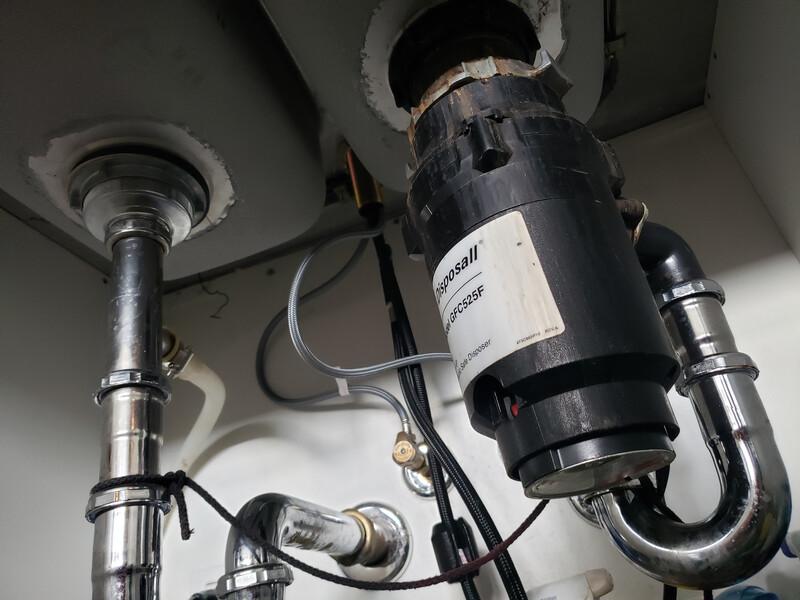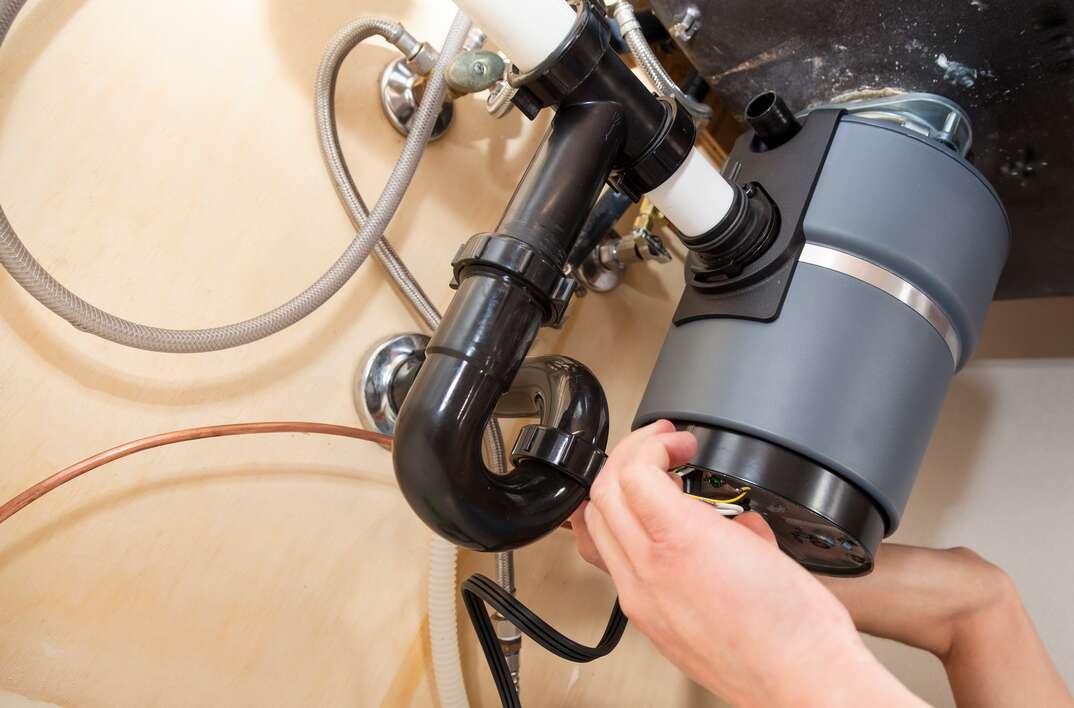Were you in search of facts Garbage Disposal Leaking From Bottom?

Waste disposal unit are important kitchen area home appliances that assist in taking care of food waste effectively. However, a leaking waste disposal unit can be a discouraging and unpleasant problem to deal with. The good news is, several leakages can be taken care of quickly with a few easy actions. In this short article, we will talk about exactly how to fix a leaking waste disposal unit efficiently.
Intro
Waste disposal unit are installed under kitchen area sinks and are made to shred food waste right into smaller items, allowing it to travel through the plumbing system conveniently. While these devices are generally dependable, leaks can occur gradually as a result of damage, loosened links, or damages to the device.
Step-by-Step Overview to Dealing With a Dripping Waste Disposal Unit
Switch off the Power
Prior to attempting any kind of repairs, guarantee that the power to the garbage disposal unit is shut off to avoid the risk of electrical shock.
Situate the Leakage
Identify the exact area of the leakage and establish the cause
Tighten Links
Utilize a wrench to tighten up any kind of loosened connections in between the disposal system and the plumbing system.
Replace Seals or Gaskets
If the leakage is because of worn seals or gaskets, remove the old elements and replace them with brand-new ones.
Patching Splits or Holes
For splits or openings in the disposal unit, use epoxy or an appropriate patching material to seal the broken location.
Determining the Resource of the Leakage
Prior to trying to repair a leaking waste disposal unit, it is essential to determine the source of the leak. This can normally be done with visual inspection or by carrying out simple tests.
Visual Inspection
Evaluate the waste disposal unit device thoroughly for any indicators of water leak. Pay attention to locations around seals, gaskets, and link factors.
Evaluating for Leaks
One method to evaluate for leaks is by running water with the disposal device and looking for any kind of visible signs of leakage.
Common Sources Of Leaks in Garbage Disposals
Worn Seals and Gaskets
Seals and gaskets play an essential duty in avoiding water from dripping out of the garbage disposal. With time, these components can weaken, bring about leakages around the disposal unit.
Loose Links
The connections between the waste disposal unit and the pipes system can end up being loosened over time, causing water to leak out throughout operation.
Cracks or Holes in the Disposal Unit
Physical damage to the waste disposal unit, such as fractures or openings in the real estate, can additionally cause leaks.
Devices and Materials Needed for Fixing a Leaking Garbage Disposal
Before starting the repair work process, gather the needed devices and materials, including a screwdriver, flexible wrench, plumbing professional's putty, substitute seals or gaskets, and epoxy or patching product for repairing cracks or holes.
Examining the Garbage Disposal After Repair Service
Once the repair is full, examine the waste disposal unit by running water with it to guarantee that the leakage has been resolved.
Preventive Upkeep Tips to Stay Clear Of Future Leakages
To stop future leaks, it is essential to execute regular maintenance on your garbage disposal. This includes keeping it clean, staying clear of placing non-food items or hard things down the disposal, and periodically checking for leaks or other problems.
Verdict
Finally, fixing a leaking garbage disposal is a relatively uncomplicated process that can be finished with fundamental tools and products. By following the actions laid out in this article and exercising preventive maintenance, you can keep your waste disposal unit in good working problem and prevent expensive repairs in the future.
What to Do About a Leaking Garbage Disposal
A leaking garbage disposal often goes unnoticed until you confront a sopping cabinet, a foul-smelling puddle, or an audible drip-drip-drip from the unit. The fix can be frustrating, too, because the leak can stem from a number of components in the system. Fortunately, with a little sleuthing, you can zero in on the leak and—depending on the exact location—stop the icky oozing and repair the component that caused it. Worst case scenario, if it turns out that the garbage disposal must be replaced, installing a new one is a reasonable do-it-yourself task for those with basic plumbing skills. Read on to keep the cash you’d otherwise hand over to a pro.
Prepare to find the leak
Prior to testing the garbage disposal for leaks, unplug it at the wall outlet and turn off the power from the breaker box to prevent electrical shock. Then insert a watertight sink stopper into your sink drain and wipe the unit dry with a clean cloth. In any handy container, mix a few drops of food coloring into a few cups of water, and pour the dyed water onto the sink stopper to help you locate the leak.
Investigate the source
the top, where the disposal meets the sink drain the side, where the dishwasher hose or main drain pipe connects to the disposal or the bottom of the unit Inspect each of these locations while gliding a light-colored rag over the unit; the dyed water will readily show on the rag and reveal the location of the leak. If a leak isn’t immediately apparent, remove the sink stopper and pour a few more cups of dyed water down the sink drain, then check for leaks again. Leaks near the top of the unit are more likely to show themselves while the sink is plugged, while side and bottom leaks are more noticeable while the sink is unplugged.
The metal sink flange that sits directly inside the sink drain is typically sealed around the top with plumber’s putty (a clay-like sealant) and then secured from under the sink with bolts. If the plumber’s putty deteriorates, or the bolts loosen, the flange can no longer form a watertight seal between the sink drain and the disposal—which could cause a leak at the top of the unit.
To reseal the leaky flange, you must first detach the garbage disposal. Start by loosening the screws securing the main drain pipe to the disposal, then loosen the screws in the metal clamp securing the dishwasher hose to the disposal and detach the drain pipe and dishwasher hose from the disposal. Loosen the screws in the mounting ring that connects the disposal to the metal mounting assembly beneath the sink, then pull down the disposal and carefully set it on a clean, dry surface. Loosen the bolts in the mounting assembly with a wrench, then pull down the mounting assembly and set it near the disposal.

Do you really like reading up on Garbage Disposal Leaking From Bottom? Leave a review directly below. We'd be delighted to find out your thoughts about this blog post. We are looking forward that you visit us again before long. You should take the time to distribute this page if you appreciated it. Many thanks for your time spent reading it.
Click Here